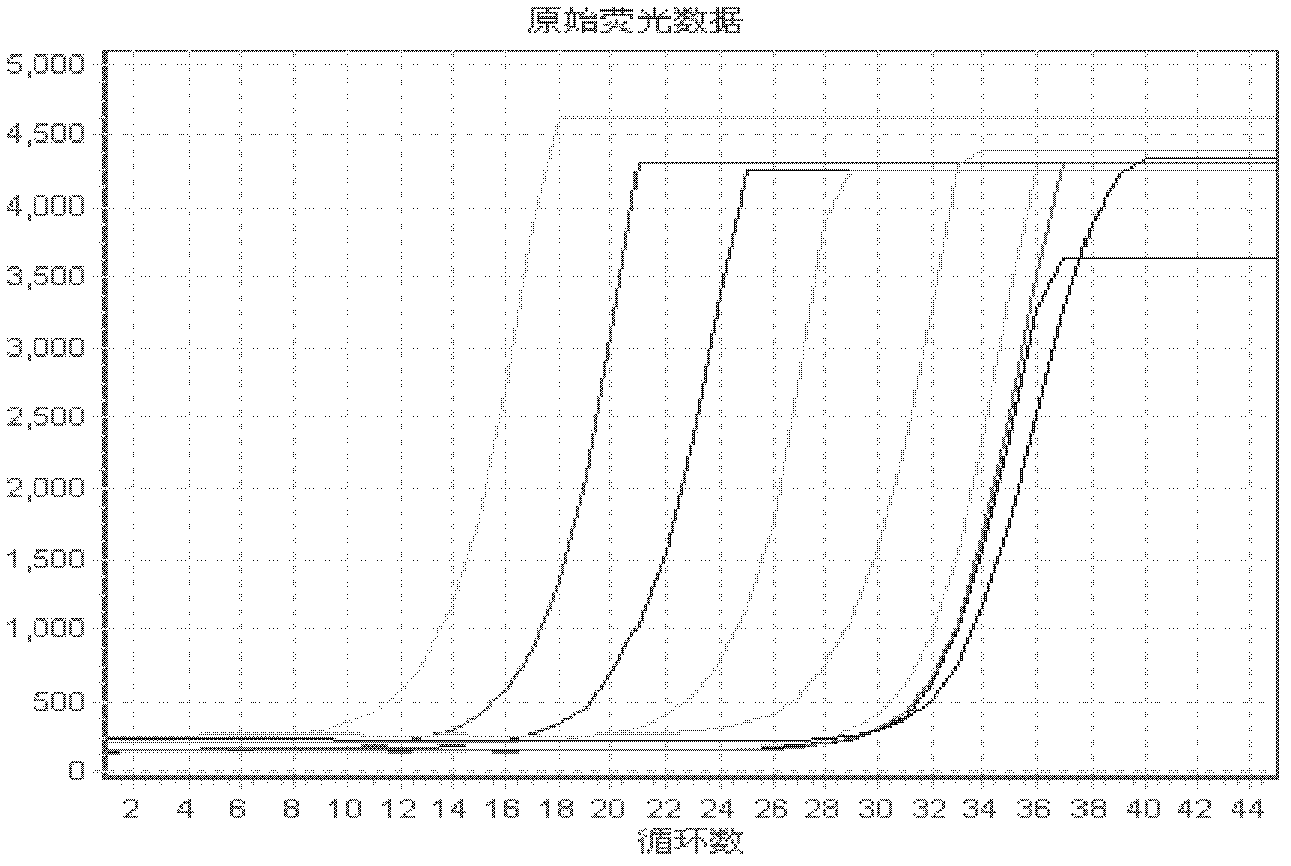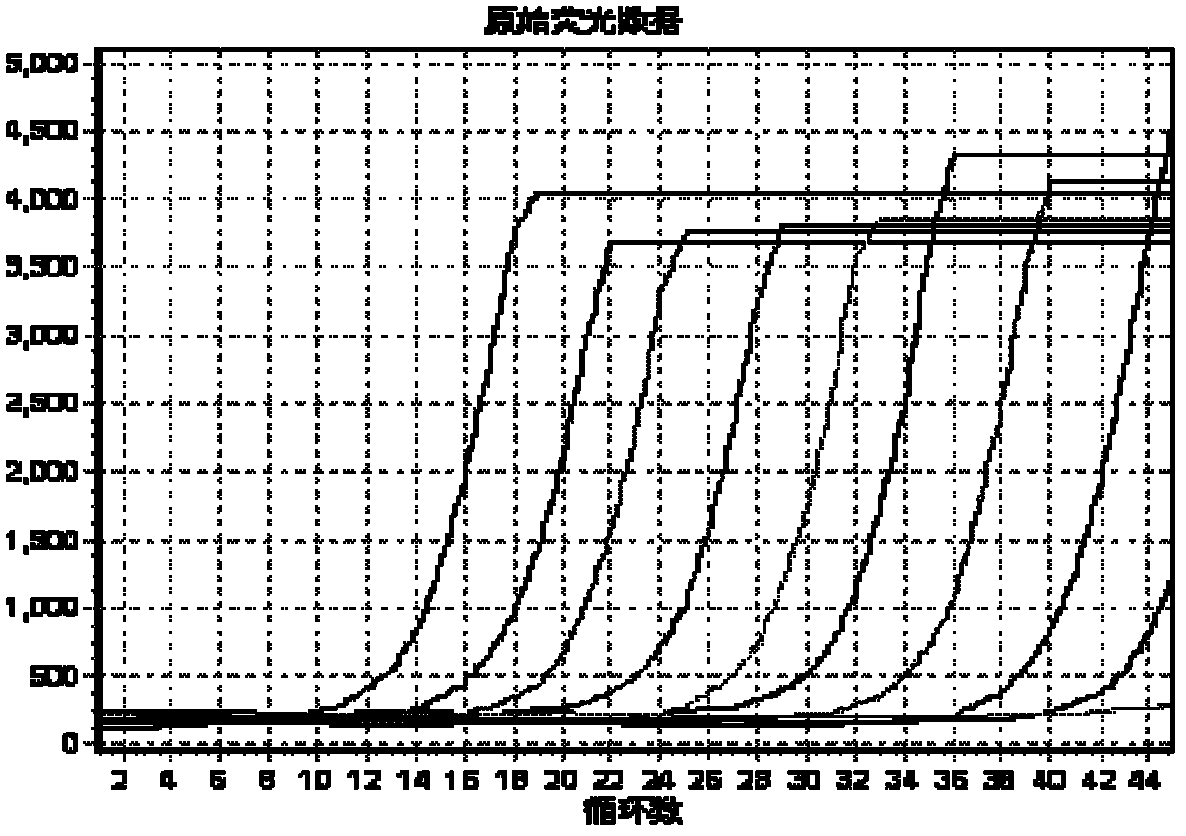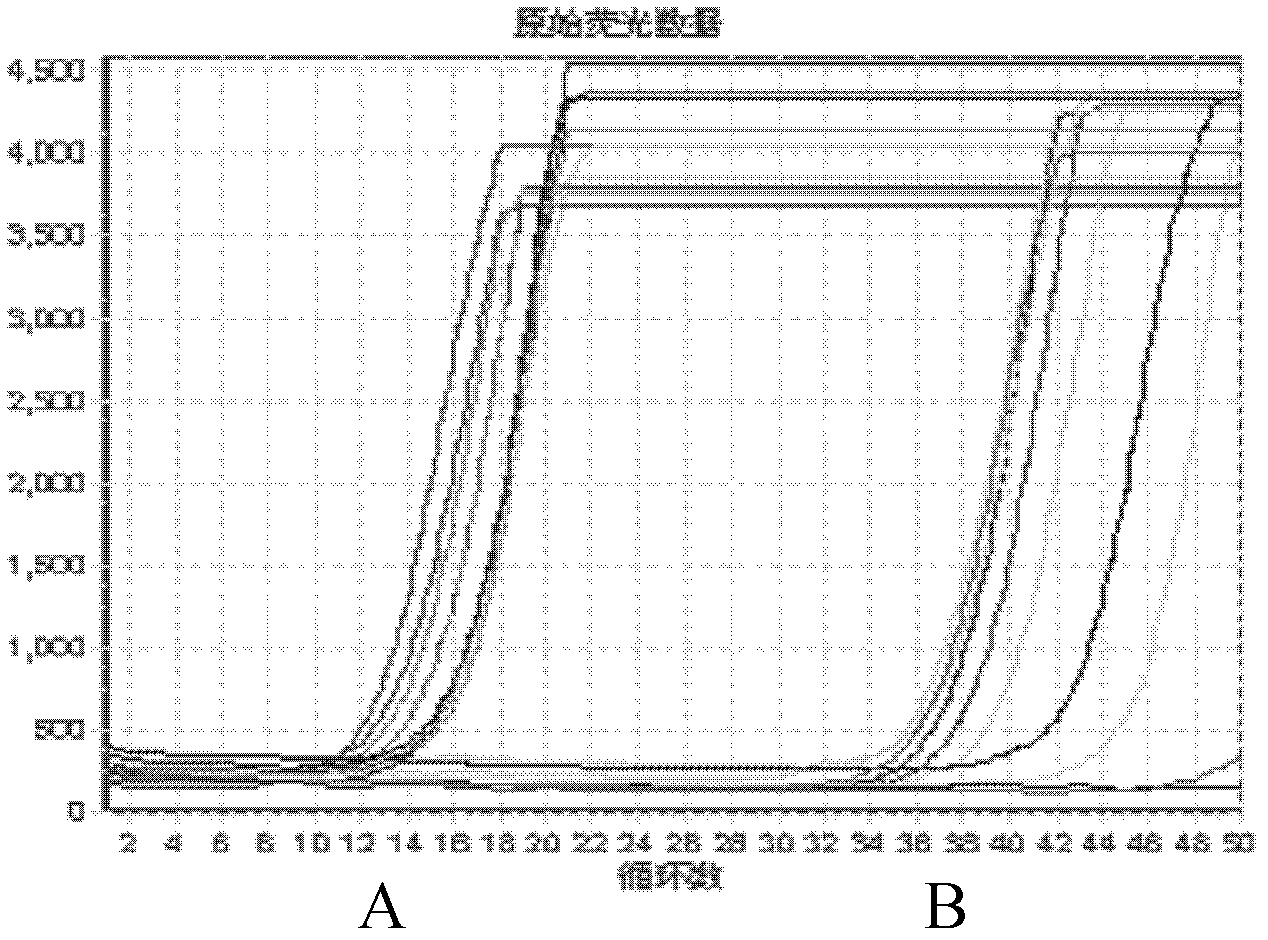Antisense interference oligonucleotide used for inhibiting primer non-specific amplification
An antisense oligonucleotide, non-specific technology, applied in the determination/inspection of microorganisms, biochemical equipment and methods, DNA/RNA fragments, etc., can solve the problems of delay, limited degradation, and inability to eliminate
- Summary
- Abstract
- Description
- Claims
- Application Information
AI Technical Summary
Problems solved by technology
Method used
Image
Examples
example 1
[0083] Example 1: Real-time fluorescent PCR of human hepatitis B virus SYBR Green I:
[0084] Hepatitis B virus (referred to as hepatitis B) is a worldwide infectious disease caused by hepatitis B virus (Hepatitis B virus, HBV). The infection rate of hepatitis B in our country is very high, which greatly endangers people's health. At present, the detection methods of hepatitis B mainly include enzyme immunoassay, radioimmunoassay, chemiluminescence, immunofluorescence, nucleic acid amplification (PCR) fluorescence quantitative method and so on. Enzyme immunoassay is widely used, but real-time fluorescent PCR analysis can accurately detect the virus gene of hepatitis B patients, and plays an irreplaceable important role in judging the virus replication level of infected patients, monitoring the infectivity of the disease and the efficacy of antiviral drugs.
[0085] Hepatitis B virus (HBV) is a partially double-stranded DNA virus. It mainly has three type-specific conserved re...
example 2
[0118] Example 2: HBV modified TaqMan probe method real-time fluorescent PCR:
[0119] Probe-based real-time fluorescent PCR is mainly represented by TaqMan probes, and also includes MGB probes with increased binding force and locked nucleic acid LNA base probes. The increased signal of the amplified product is detected by a fluorescent probe with a quencher group. Generally, the 5' end of TaqMan probes is labeled with fluorescent groups such as FAM, VIC, NED, and the 3' end is labeled with quenching groups such as TAMRA, DABCYL&BHQ, etc., and the quenched TaqMan probes are hydrolyzed by the 5' exonuclease of Taq enzyme. Free fluorophores generate fluorescence. TaqMan probe design respects the following general principles: 1) The T of the probe m Value ratio of primer T m The value should be higher than 10°C; 2) The 5' end of the probe cannot be a G base, and the degraded G still has the effect of quenching the reporter fluorescence; 3) The G in the probe cannot be more tha...
PUM
 Login to View More
Login to View More Abstract
Description
Claims
Application Information
 Login to View More
Login to View More - R&D
- Intellectual Property
- Life Sciences
- Materials
- Tech Scout
- Unparalleled Data Quality
- Higher Quality Content
- 60% Fewer Hallucinations
Browse by: Latest US Patents, China's latest patents, Technical Efficacy Thesaurus, Application Domain, Technology Topic, Popular Technical Reports.
© 2025 PatSnap. All rights reserved.Legal|Privacy policy|Modern Slavery Act Transparency Statement|Sitemap|About US| Contact US: help@patsnap.com



